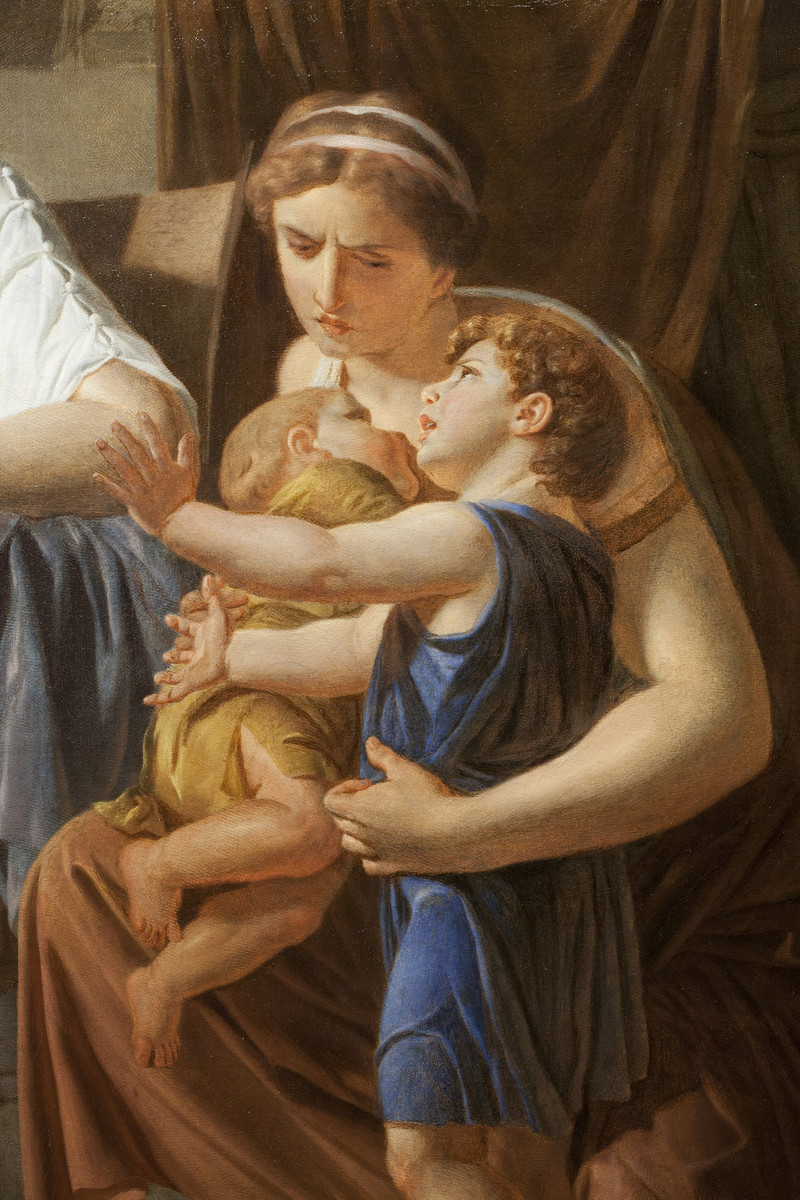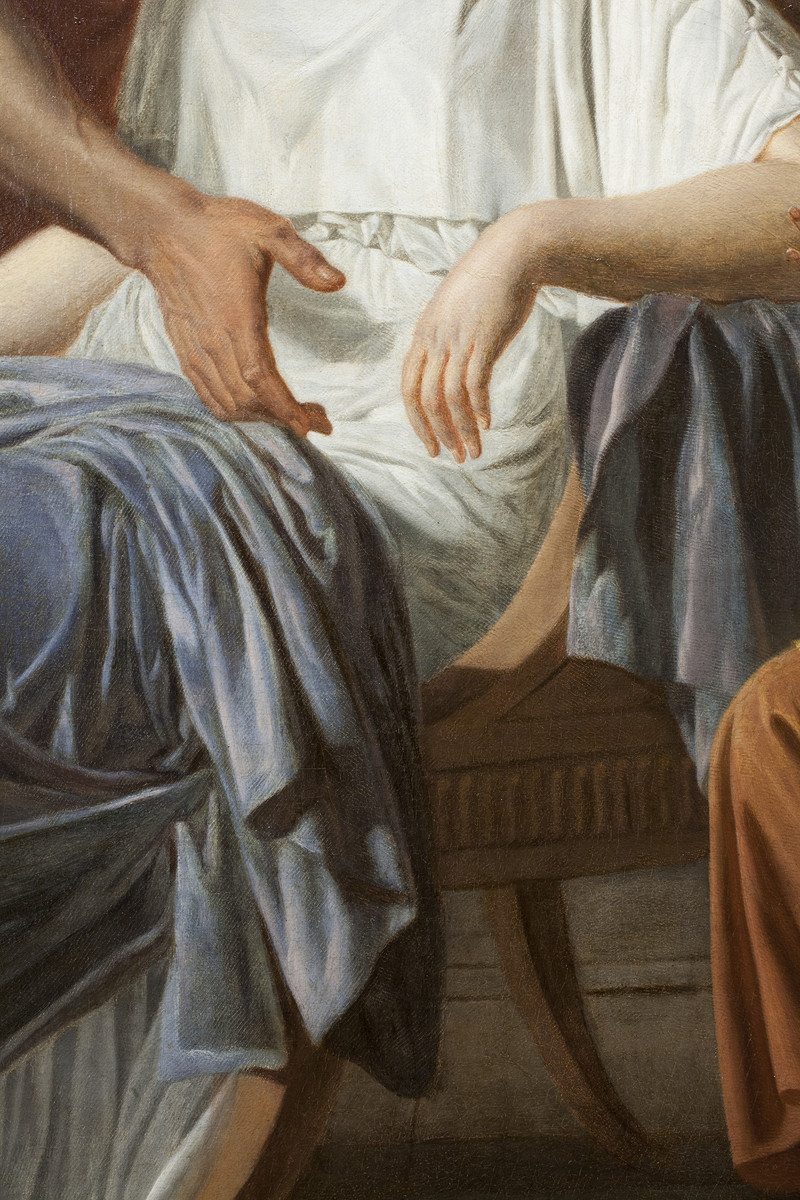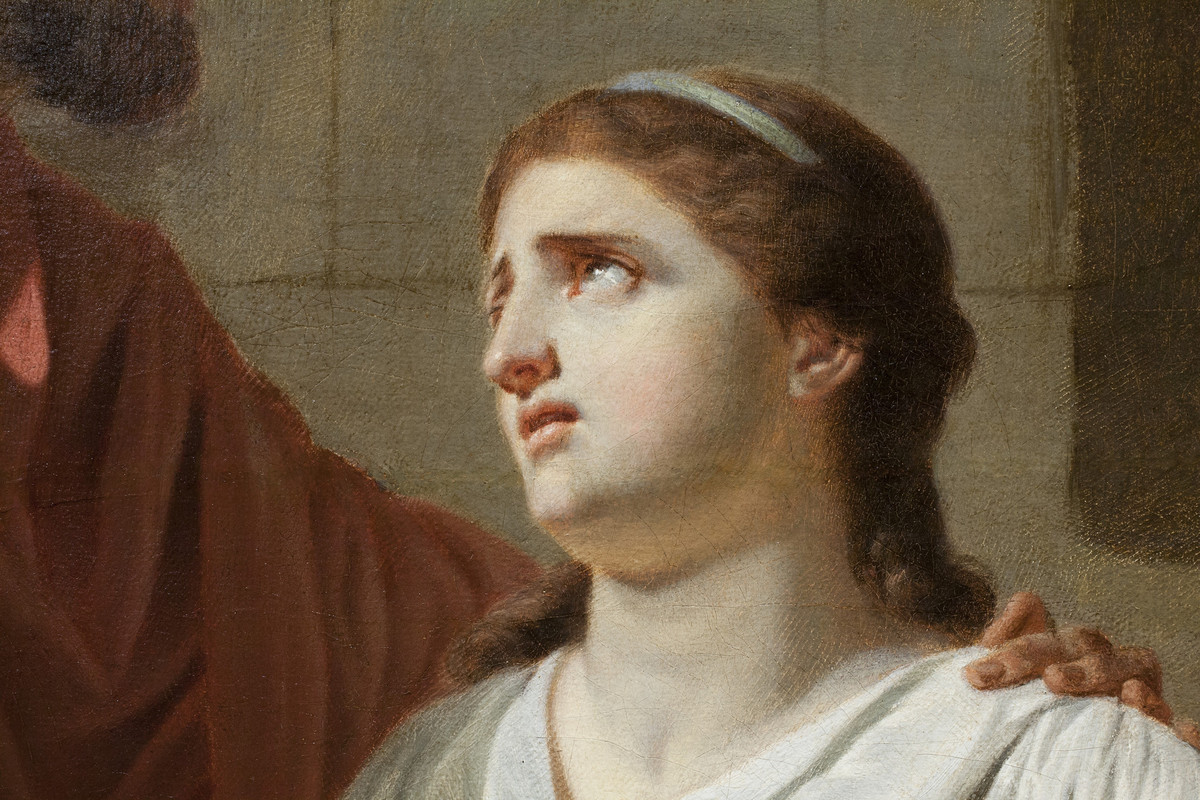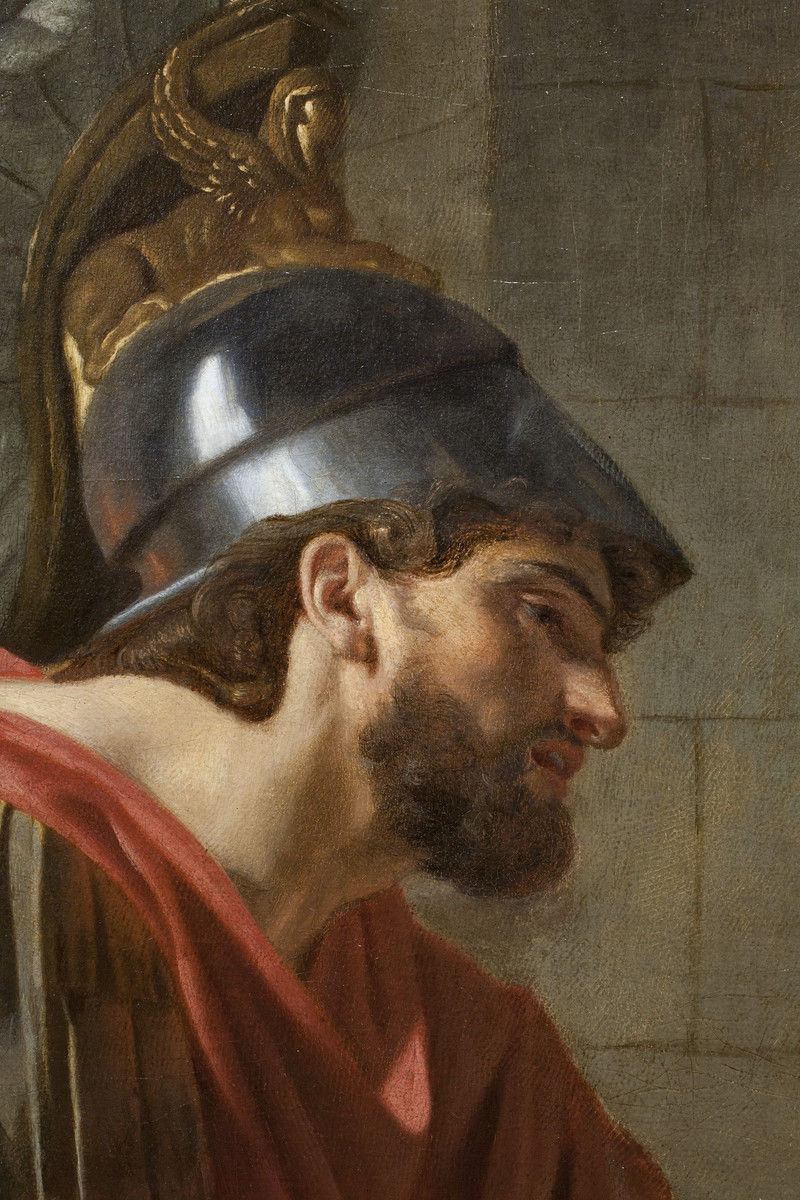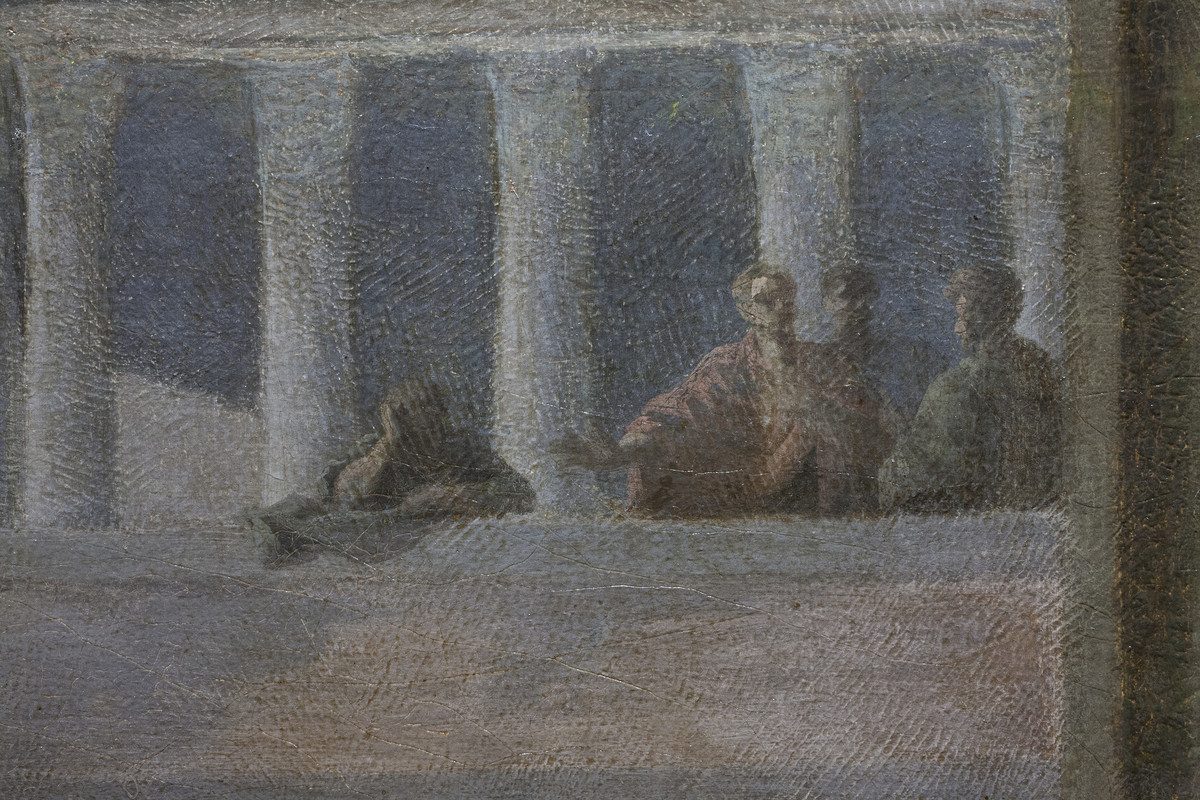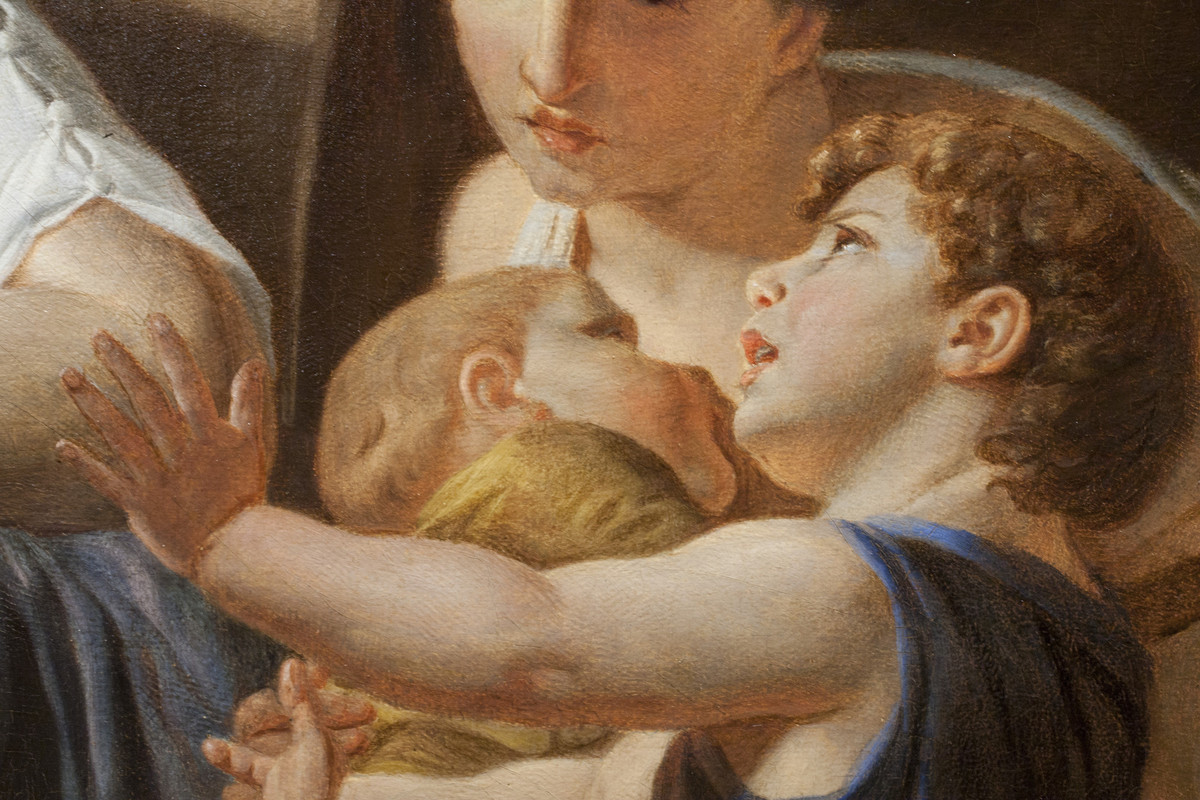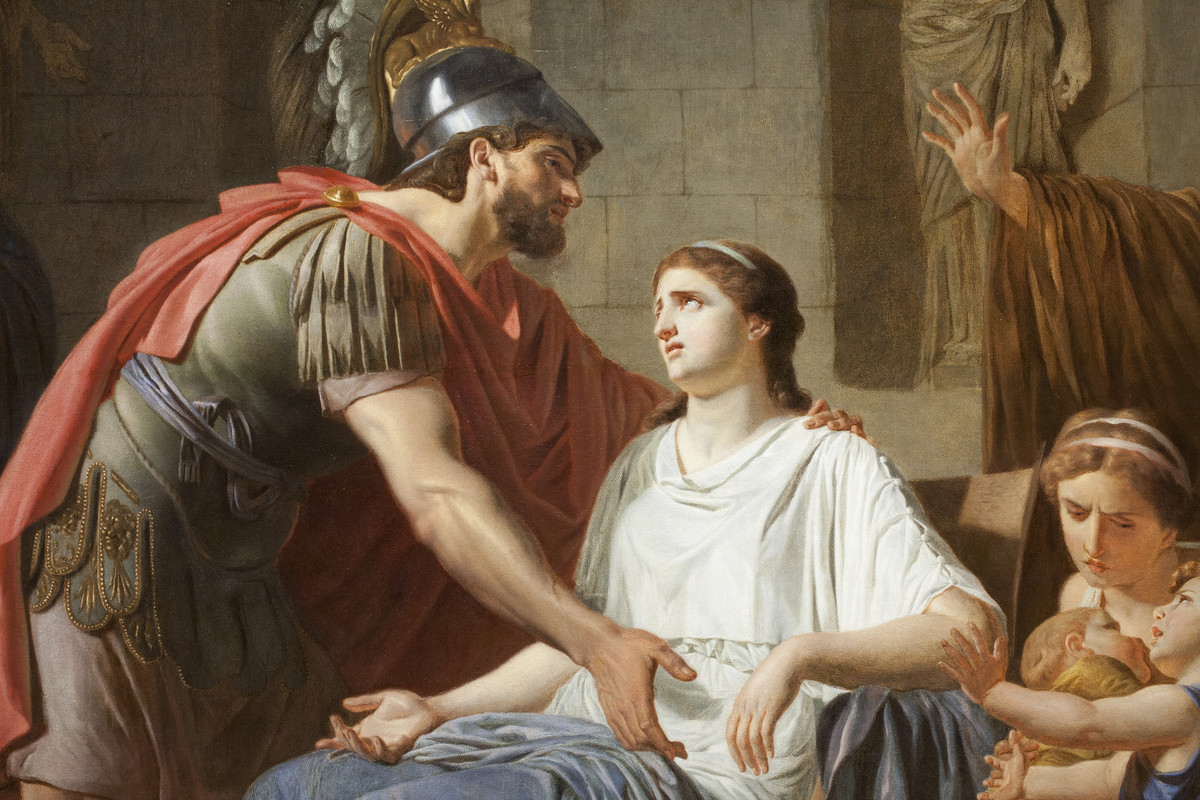On View
Aubry, Etienne
French (1745-1781)
Place made: Europe; France
Les Adieux de Coriolan à sa Femme au moment qu’il part pour se rendre chez les Volsques (Coriolanus Taking Leave of his Wife to Join the Volscians in their Attack upon Rome), ca. 1780
Frame: 68 1/4 in x 88 5/8 in x 4 5/8 in; 173.4 cm x 225.1 cm x 11.7 cm; Stretcher: 57 3/4 in x 77 1/4 in; 146.7 cm x 196.2 cm
Purchase with funds given in honor of Helen Leidner Chaikin by her daughter Joyce Chaikin Ahrens, Class of 1962
MH 2014.32

 GIVE
GIVE
